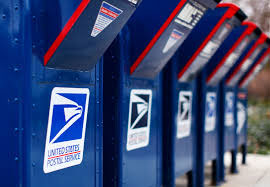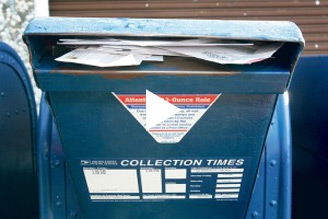This article originally appeared in Morning Consult on June 5, 2019.
There is a severe problem with leadership at the U.S. Postal Service as the agency’s fiscal cracks grow wider by the day. In the second quarter of 2019, the USPS reported net losses of $2.1 billion and declining revenues nearly across the board. The one bright spot is shipping and packaging volume (up .3 percent compared to the same quarter last year), but “competitive products” revenue from items such as packages don’t nearly make up for the gargantuan drop in regular mail volume. This “bright spot” may actually exacerbate USPS’ problems unless they lift the veil of secrecy of pricing and make the rates more realistic.
To ramp up revenue per package, the agency will be charging more for larger-sized Priority Mail packages starting this month. But, if the USPS wants to improve their finances, they’ll need to cut down on the sweetheart deals with large companies instead of homing in on Priority Mail (mainly smaller clients). The beleaguered agency can get its finances back in order, but only by clamping down on classified deals that defy all logic.
As packages grow larger, more truck space and manpower are needed to keep deliveries moving and consumers satisfied. To cash in on these monster packages, the USPS will implement a new system in June where Priority Mail packages over a cubic foot will be priced based on their dimensions regardless of destination. Currently, dimensions are only taken into account if packages are shipped over long distances (i.e. New York to California). Additionally, the same dimensions will now result in higher weight assignment, and thus higher prices across the board. The USPS hopes that putting its packages on a diet will free up valuable truck space and/or fill depleted postal coffers.
But this “dieting” approach is akin to cutting out one Hershey’s bar a day while continuing to eat double cheeseburgers with extra-large sodas and fries. The lion’s share of package losses stem from private, secretive agreements with manufacturers and e-commerce giants. These sweetheart deals have companies scoring postage rates at about 60 percent of what ordinary consumers would pay via Priority Mail.
There is, of course, nothing inherently wrong with e-commerce behemoths enjoying low postage prices in exchange for guaranteeing a huge chunk of business for the USPS. Buying postage in bulk isn’t much different than buying cheap mac and cheese in bulk from Costco. But offering these discounts only makes sense if there’s sound accounting in place to make sure that these agreements are covering costs. That is almost certainly not the case.
New handheld GPS-enabled scanners to “to scan and transmit package tracking data” have, well, an obvious purpose. But even with enhanced information from the scanners, the agency has the chutzpah to assign less than a tenth of their costs to package deliveries. The discrepancy will only get worse, as the USPS comes to a $7 billion decision about which vendor to use to replace its aging truck fleet. These trucks’ ability to hold large, heavy packages seems to be an important factor in the agency’s final decision, which is hard to jive with the USPS barely attributing any costs to packages.
But, before this flawed system can change, the USPS needs to let taxpayers and consumers know how it’s coming up with its wacky pricing numbers. USPS’ methodologies are famously classified, on par with some of the juiciest tidbits from the Mueller report and Central Intelligence Agency dalliances in the desert. Once outside academics and economists have a chance to evaluate USPS pricing, the agency and its watchdogs can have a fruitful discussion on how to reform the system.
The USPS may be hemorrhaging cash at an unfathomable rate, but it is not a lost cause. If the USPS expands realistic pricing to the lion’s share of its packages, it can turn a bright spot into a lucrative business. Taxpayers and consumers deserve nothing less than a thriving USPS that puts prices on par with reality.



